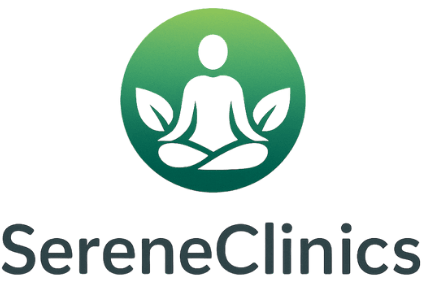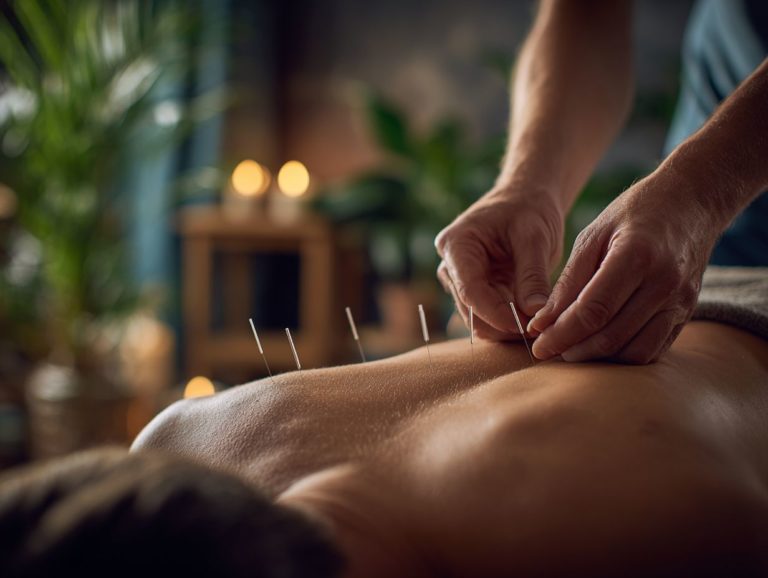Tai Chi and Qigong: Techniques and Benefits for Pain Relief
Learn how Tai Chi and Qigong can effectively help with pain relief. In Denver, these old practices provide gentle exercises that help reduce discomfort and improve overall health. This article looks at the methods and advantages of Tai Chi and Qigong, showing how these thoughtful exercises can better your life. Learn how to include these practices in your routine for long-term pain relief.
Key Takeaways:
Contents
- 1 Understanding Pain and Its Types
- 2 Principles of Tai Chi
- 3 Principles of Qigong
- 4 Techniques for Pain Relief in Tai Chi
- 5 Techniques for Pain Relief in Qigong
- 6 Scientific Evidence Supporting Benefits
- 7 Health Benefits of Tai Chi and Qigong
- 8 Practical Tips for Practicing Tai Chi and Qigong
- 9 Frequently Asked Questions
- 9.1 What is the difference between Tai Chi and Qigong?
- 9.2 How do Tai Chi and Qigong help with pain relief?
- 9.3 Are there any specific techniques in Tai Chi and Qigong that target pain relief?
- 9.4 What are the other benefits of practicing Tai Chi and Qigong?
- 9.5 Is Tai Chi and Qigong suitable for all ages and fitness levels?
- 9.6 Do I need any equipment to practice Tai Chi and Qigong?
Definition and Origins
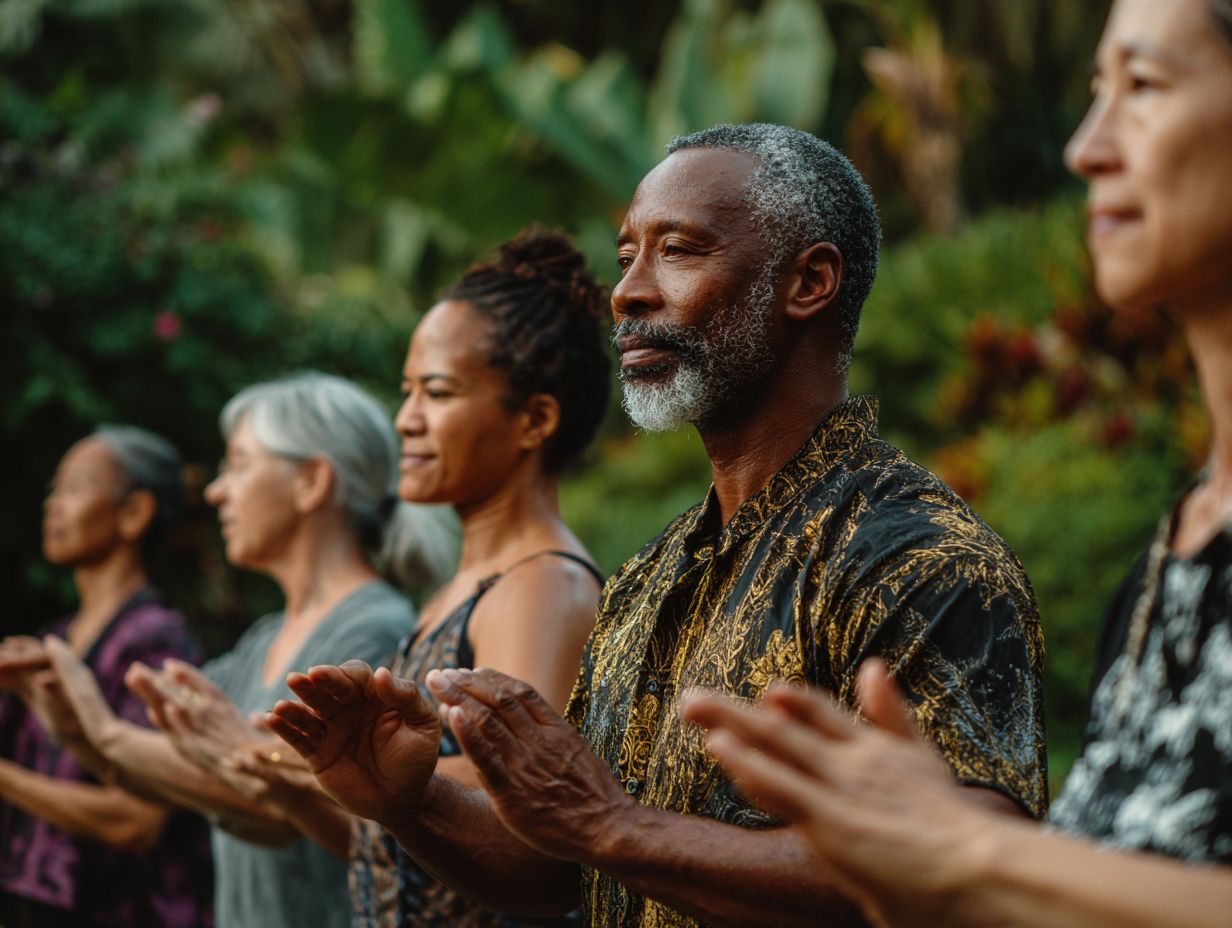
Tai Chi started as a martial art over 700 years ago and has since become a gentle exercise. In contrast, Qigong began over 4,000 years ago with a focus on developing energy.
Tai Chi emphasizes slow, flowing movements which improve flexibility and balance, exemplified by the Chen and Yang styles, each offering unique forms and postures.
Chen style, known for its explosive movements, contrasts with the Yang style, which focuses on graceful, continuous flow.
On the other hand, Qigong involves different breathing exercises and meditation poses, like the Eight Pieces of Brocade, which help with relaxation and energy. According to Britannica, these practices are deeply rooted in traditional Chinese medicine and offer significant mental and physical benefits.
Both practices together help improve physical and mental well-being, which is why many people interested in overall health are drawn to them.
Philosophical Foundations
The philosophies of Tai Chi and Qigong are deeply rooted in the concepts of yin-yang and Qi, emphasizing balance and the flow of life energy.
Yin-yang represents the dualities in life-dark and light, passive and active-and illustrates how opposites create harmony.
Qi, or life energy, is thought to move through each person and is important for health and strength. Practicing Tai Chi involves slow, careful movements to develop Qi, while Qigong includes different breathing methods and meditations to increase this energy. According to ScienceDirect, Qi is a fundamental aspect in traditional Chinese medicine, highlighting its significance in enhancing health and vitality.
To easily include these practices in your routine, begin with daily 10-minute sessions of Qigong exercises that help you relax and increase your energy. As you get used to it, slowly add Tai Chi movements. For further insights, you can explore Qigong: Techniques, Benefits, and Role in Health to deepen your understanding of its health advantages.
Understanding Pain and Its Types
Knowing the details of pain, including its types and causes, is essential for managing it well, especially with conditions like fibromyalgia and arthritis. For a deeper understanding of effective pain management techniques, delve into our guide on managing pain with acupuncture, which offers insights into chi balancing methods.
Acute vs. Chronic Pain
Acute pain, often due to injury, is short-lived, whereas chronic pain persists for months or longer, significantly impacting quality of life.
Chronic pain affects approximately 20% of American adults, leading to issues like fatigue, sleep disturbances, and depression. Managing this type of pain usually includes taking medicines such as NSAIDs or antidepressants, going to physical therapy, and changing lifestyle habits like exercising regularly. According to a data brief from the CDC, chronic pain not only diminishes quality of life but also has widespread implications for public health.
For instance, cognitive-behavioral therapy can help patients understand and cope with their pain, increasing resilience. Many people find relief by practicing mindfulness or using acupuncture, which can lower stress and improve overall health.
Effectively addressing chronic pain is essential for improving daily function and mental health.
Common Causes of Pain
Chronic pain can stem from various causes, including fibromyalgia, arthritis, and lifestyle factors like stress and sedentary behavior.
Fibromyalgia affects approximately 4 million adults in the U.S., leading to widespread musculoskeletal pain and fatigue.
Arthritis, which includes osteoarthritis and rheumatoid arthritis, impacts around 54 million adults, causing joint pain that can significantly hinder daily activities.
Lifestyle factors such as prolonged sitting and high stress levels can exacerbate existing pain conditions.
To manage stress well, people might want to try exercises such as yoga or pilates to improve flexibility and strength. They can also look into counseling or cognitive behavioral therapy to help with pain caused by stress.
Regular exercise is important for keeping your body healthy and reducing pain.
Principles of Tai Chi
Tai Chi involves mindful and focused movements, offering a meditative practice that supports both physical and mental health. For those interested in exploring similar practices, Qigong techniques provide additional benefits and health insights.
Mindfulness and Focus
Doing Tai Chi with a focus on mindfulness improves mental clarity and lowers stress, which is important for managing pain and maintaining good health.
To bring mindfulness into your Tai Chi practice, start by paying attention to your breathing. Inhale deeply through your nose, allowing your abdomen to expand, and exhale slowly through your mouth.
As you perform each movement, pay attention to how your body feels, noticing any areas of tension or discomfort. Try to maintain a steady pace, allowing thoughts to pass by without attachment.
Practicing for just 10 minutes a day can greatly help you stay focused and provide both mental and physical relaxation.
Movement and Breath Coordination
Doing movements with breathing in Tai Chi improves how the body works and helps you relax, which is important for easing pain.
To practice this essential coordination, start by inhaling deeply as you raise your arms in a gentle arc, allowing your chest to expand. Then, as you lower your arms, exhale slowly, visualizing tension releasing with your breath.
This method calms the mind and helps control pain by promoting relaxation. A simple routine, repeated for 10-15 minutes daily, can significantly reduce discomfort and promote a sense of well-being.
Many practitioners report reduced chronic pain over time by consistently focusing on this breath-movement harmony.
Principles of Qigong
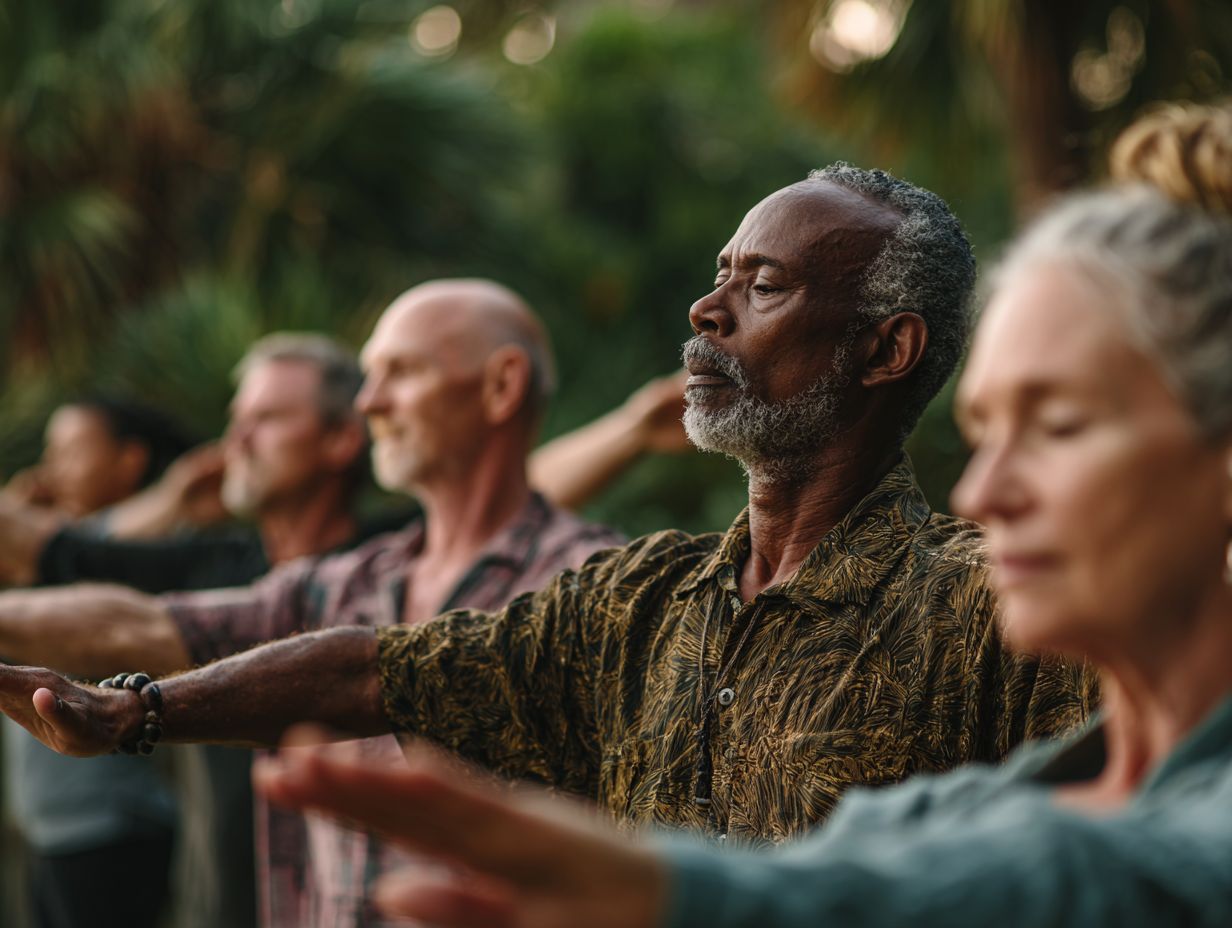
Qigong focuses on the ideas of energy movement and equilibrium, promoting overall health and can help alleviate long-term pain.
Energy Flow and Balance
In Qigong, keeping energy balanced is important; techniques help control Qi movement, which can improve health and reduce pain.
Two effective Qigong methods for managing chronic pain are ‘Baduanjin’ (Eight Pieces of Brocade) and ‘Zhan Zhuang’ (Standing Meditation).
Baduanjin features simple exercises that improve flexibility and blood circulation, making it ideal for daily practice. Zhan Zhuang, on the other hand, emphasizes standing still to promote deep relaxation and stabilize energy.
Practicing these techniques for just 15-30 minutes each day can help release tension and improve the flow of Qi, offering significant relief from chronic pain symptoms over time.
Breathing Techniques
Breathing methods in Qigong help develop calmness and concentration, important for handling pain and improving overall health.
One effective technique is abdominal breathing, where you inhale deeply through your nose, allowing your abdomen to expand, and then exhale slowly through your mouth. Spending 5-10 minutes on this each day can help your lungs work better and reduce stress levels.
Another method is the `Four Square Breathing’ technique, which involves inhaling for four counts, holding the breath for four, exhaling for four, and resting for four. This technique can help you manage your breathing and calm your mind, which is particularly useful when you feel anxious.
Techniques for Pain Relief in Tai Chi
Tai Chi uses soft movements and positions that can greatly help reduce pain from conditions such as arthritis and lower back pain.
Gentle Movements and Postures
Important Tai Chi positions, like ‘Ward Off’ and ‘Grasp the Bird’s Tail,’ focus on slow movements that improve flexibility and lessen joint pain.
To add these postures to your routine, start by standing and practicing ‘Ward Off’. Stand with feet shoulder-width apart, shift your weight onto one leg while gently raising the opposite arm forward, then push forward as if fending off an opponent.
This position stretches the upper body and helps with balance. Similarly, ‘Grasp the Bird’s Tail’ involves shifting weight and gently turning the torso, which can help alleviate back and shoulder tension.
Practicing these movements for 10-15 minutes daily can significantly improve your comfort and mobility.
Integrating Breath with Movement
Integrating breath with movement in Tai Chi improves relaxation and focus, further aiding in the management of chronic pain symptoms.
To effectively combine breath with Tai Chi, start by focusing on your inhalation and exhalation as you perform each movement.
For example, inhale deeply as you raise your arms in the ‘Cloud Hands’ movement, allowing your chest to expand, then exhale slowly as you lower your arms.
Incorporating tools like a meditation app can also help track your breathing rhythm, ensuring a smoother experience.
Practice for a minimum of 20 minutes daily. Regular practice can greatly lessen pain and improve your overall health.
Techniques for Pain Relief in Qigong
Qigong methods for reducing pain involve particular movements and mental imagery exercises that support recovery and improve body performance.
Specific Qigong Exercises
Exercises like ‘Cloud Hands’ and ‘Eight Pieces of Brocade’ are effective in promoting flexibility and relieving pain in chronic conditions.
For example, ‘Cloud Hands’ involves a gentle side-to-side motion that improves hip movement and eases tension in the lower back. To perform it, stand with your feet shoulder-width apart, shift weight to one foot, and slowly sweep your arms across your body as you pivot your feet.
In contrast, ‘Eight Pieces of Brocade’ consists of eight distinct movements that focus on different body areas and promote circulation. Each series usually lasts 15-20 minutes, making them easy to fit into your daily routine, and they can greatly benefit your health.
Visualization and Intention
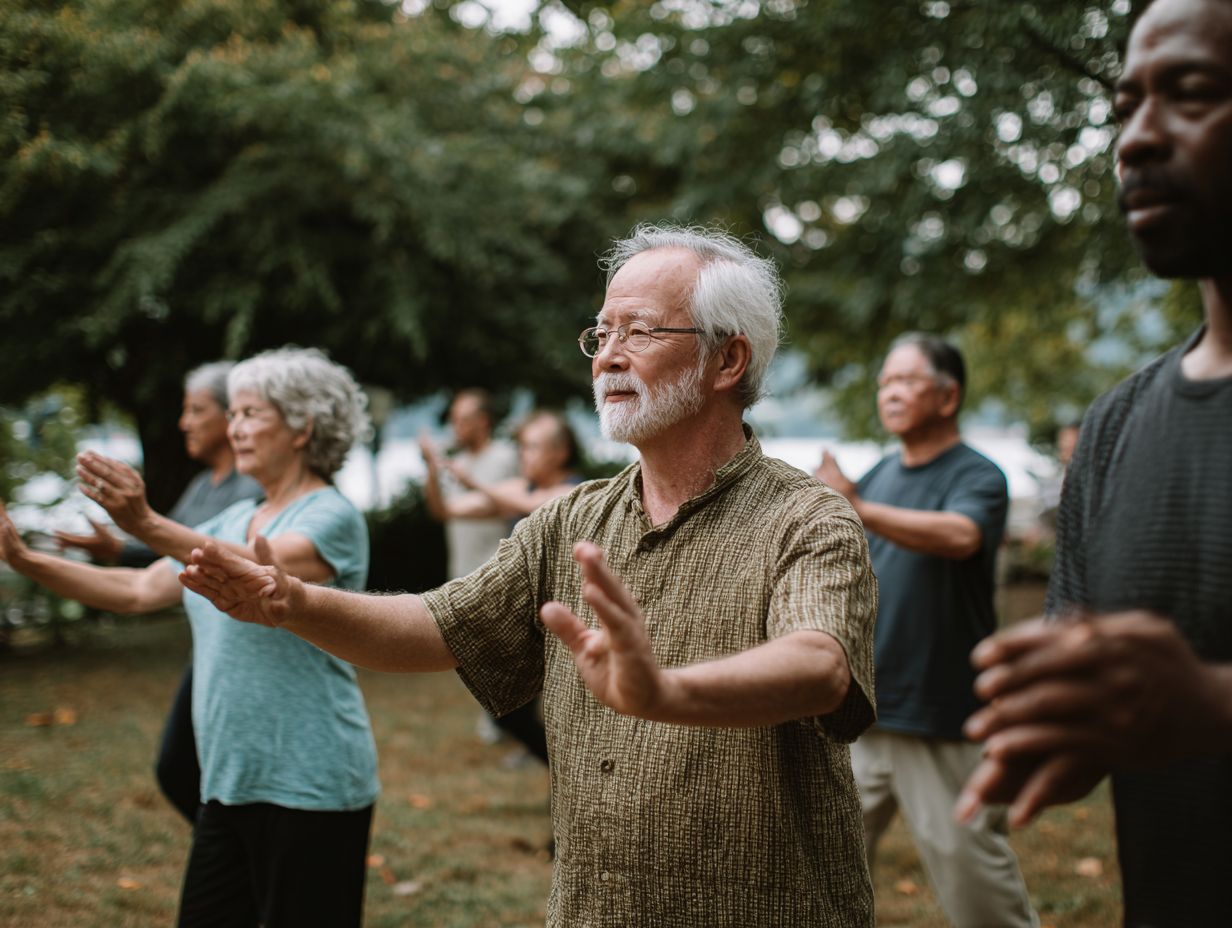
Adding visualization and focus to Qigong practice can improve mental skills in handling pain, strengthening the link between mind and body.
To effectively integrate these techniques, begin by setting a clear intention before starting your practice. For instance, visualize a warm light emanating from the area of pain, imagining it soothing and healing the discomfort.
During the fluid movements of Qigong, maintain focus on this visualization, breathing deeply to reinforce your intention. You can find Qigong videos online or use apps like Insight Timer for organized sessions with visualization exercises.
This method helps build awareness, which can make pain relief more effective by engaging both your mind and body.
Scientific Evidence Supporting Benefits
Research has shown that both Tai Chi and Qigong offer significant help for pain relief and mental well-being, supported by many studies. For those interested in exploring the specific impacts and techniques of these practices, our detailed overview of Qigong: Techniques, Benefits, and Role in Health provides valuable insights.
Health Benefits of Tai Chi and Qigong
Health Benefits of Tai Chi and Qigong
Tai Chi and Qigong Benefits: General Health Outcomes
Tai Chi and Qigong Benefits: Specific Health Benefits
The Health Benefits of Tai Chi and Qigong The dataset shows how these practices can improve different health results. Tai Chi and Qigong, both ancient Chinese exercises, integrate physical movement, breathing techniques, and meditation. Their popularity in the West has increased because they focus on overall health and well-being.
General Health Outcomes highlight a significant body of research, with 77 studies on Tai Chi benefits. These studies examine diverse health impacts, confirming the wide-ranging benefits Tai Chi offers. Among these, cardiopulmonary effects are noted in 19 studies, suggesting improvements in respiratory function and cardiovascular health through regular practice. Enhancements in quality of life are reported in 17 studies Tai Chi shows how it benefits health and energy.
- Furthermore, there is evidence of a reduction in psychological symptoms across 27 studies, indicating that Tai Chi can be effective in alleviating stress, anxiety, and depression, contributing to better mental health.
Specific Health Benefits look into specific benefits, like balance improvement, supported by 73 studies. This is especially helpful for older adults, as better balance lowers the risk of falls and improves movement. Although fewer studies, only 4, focus on Tai Chi effects on bone density, they suggest potential benefits for bone health, which can be critical in preventing osteoporosis.
- Improvement in self-efficacy, backed by 8 studies, shows that Tai Chi increases confidence in handling health and wellness difficulties.
- Lastly, falls and balance studies are represented in 23 investigations focusing on how Tai Chi can help prevent falls, which is important for older adults.
In summary, the Health Benefits of Tai Chi and Qigong data showcases the extensive research supporting these practices as effective methods for enhancing physical and mental health. Tai Chi and Qigong are helpful for better balance, improving life quality, and decreasing mental health issues.
Studies on Pain Management
A study published in the New England Journal of Medicine found that Tai Chi significantly reduced pain levels in patients with fibromyalgia compared to standard treatments.
In this randomized controlled trial involving 200 participants, researchers assigned one group to participate in Tai Chi classes for 12 weeks while another group received conventional therapy.
Pain was measured using well-known scales before, during, and after the treatment. Results showed that the Tai Chi group reported a 30% greater reduction in pain compared to the control group.
More studies have found that Qigong, which uses slow movements and focused breathing, can also help reduce pain, making it a useful part of treatment plans.
Effects on Mental Health
Research indicates that Qigong and Tai Chi can reduce anxiety and depression, improving overall mental health and quality of life.
A study published in the Journal of Clinical Psychology found that participants practicing Tai Chi experienced a 43% reduction in stress levels and a significant decline in depressive symptoms after just 12 weeks.
Qigong practices have been shown to lower cortisol levels, a key stress hormone. To include these practices in your daily routine, think about joining a nearby class or using online resources like YouTube channels focused on Tai Chi and Qigong.
Simple routines can take as little as 20 minutes and yield substantial mental health benefits.
Practical Tips for Practicing Tai Chi and Qigong
Getting the right materials and creating a personal practice plan are important for getting the most out of Tai Chi and Qigong. To truly understand the benefits and nuances of these practices, exploring resources like Qigong: Techniques, Benefits, and Role in Health can be invaluable.
Finding a Class or Instructor
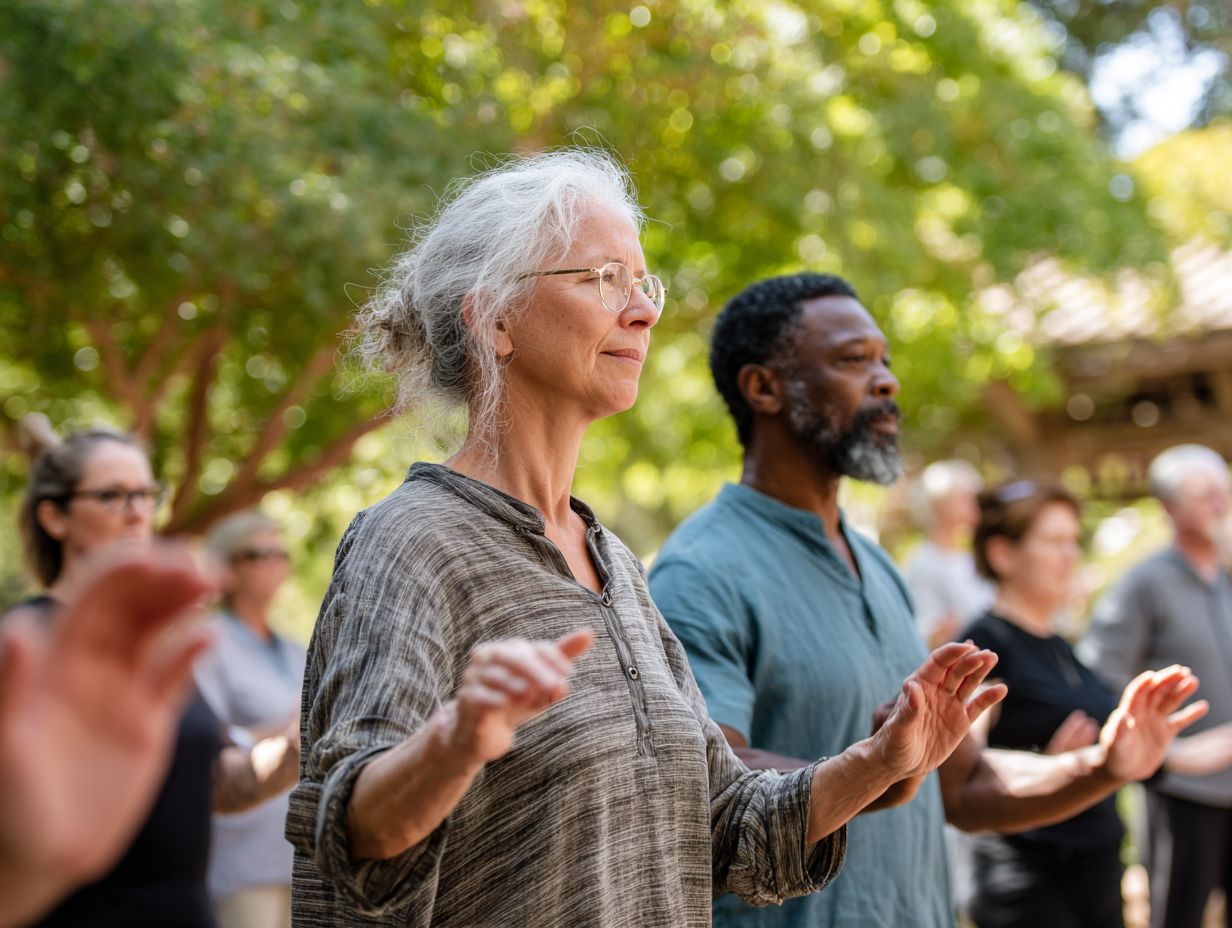
To start practicing Tai Chi or Qigong, look for local classes or certified instructors through associations like the American Tai Chi and Qigong Association.
Many online platforms offer virtual classes that are perfect for beginners. Websites like Udemy and Skillshare provide courses ranging from basic movements to advanced techniques, often led by experienced practitioners.
Look for certifications like those from the National Qigong Association for good teaching.
Community centers or local martial arts studios might also host classes, creating a more personal learning environment.
Engaging in online forums can help you find reputable instructors and share experiences with peers who practice these arts.
Creating a Personal Practice Routine
Creating a regular practice schedule for Tai Chi or Qigong can help maintain consistency and improve the positive effects. It is best to aim for sessions lasting 20-30 minutes each day.
To create an effective practice plan, start by setting clear, measurable goals. For example, try to learn a new skill each month.
Next, schedule your sessions at a regular time-perhaps early mornings or during lunch breaks-to build a habit.
Consider using apps like Strides or Habitica to monitor your progress; noting each session can assist in staying focused.
Think about adding mindfulness methods like paying attention to your breathing or imagining calming scenes to improve your practice and stay focused during sessions.
Frequently Asked Questions
What is the difference between Tai Chi and Qigong?
Tai Chi and Qigong are both ancient Chinese martial arts that focus on cultivating the body’s energy (known as “qi” or “chi”) for improved physical and mental well-being. However, Tai Chi is mainly a martial art that uses slow, smooth movements for self-defense, while Qigong is a healing method that involves breathing exercises, meditation, and intentional movements to direct and balance energy flow.
How do Tai Chi and Qigong help with pain relief?
Tai Chi and Qigong can help alleviate pain by improving circulation, reducing inflammation, and promoting relaxation. The slow, gentle movements and focused breathing in these practices can help release tension and increase flexibility, leading to a decrease in pain and discomfort. These techniques also help to improve overall physical and mental well-being, which can have a positive effect on managing chronic pain.
Are there any specific techniques in Tai Chi and Qigong that target pain relief?
Yes, there are certain movements and postures in Tai Chi and Qigong that specifically target pain relief. For example, the “Golden Rooster Standing on One Leg” posture in Qigong is known to help alleviate lower back pain, while the “Part Wild Horse’s Mane” movement in Tai Chi is effective for relieving tension in the neck and shoulders. It is important to consult with a trained instructor to learn these techniques and perform them correctly.
What are the other benefits of practicing Tai Chi and Qigong?
In addition to pain relief, Tai Chi and Qigong offer a wide range of benefits for both physical and mental health. These include improved balance and coordination, increased strength and flexibility, stress reduction, improved focus and concentration, and a sense of overall well-being. Regular practice can also help with managing chronic conditions such as arthritis, fibromyalgia, and anxiety.
Is Tai Chi and Qigong suitable for all ages and fitness levels?
Yes, Tai Chi and Qigong can be practiced by people of all ages and fitness levels. The smooth and careful motions make it a type of exercise that doesn’t strain the body, allowing people with physical challenges or health issues to participate. The strength of the movements can be changed to fit personal preferences, making it a good activity for all.
Do I need any equipment to practice Tai Chi and Qigong?
No, Tai Chi and Qigong do not require any special equipment. All you need is comfortable clothing and a quiet space to practice. Depending on the style and instructor, you may also need a mat or shoes with good grip for outdoor practice. It is recommended to consult with a trained instructor to understand the specific requirements for the practice you are interested in.

Sheetal Sharda has a background in CS. She got an interest in Holistic living back in 2018, and has since started exploring more into Naturapathy, Holistic Living, Yoga, and more. She got inspired to start SereneClinics to help people find reliable centers across the world.
